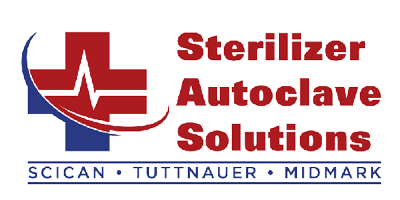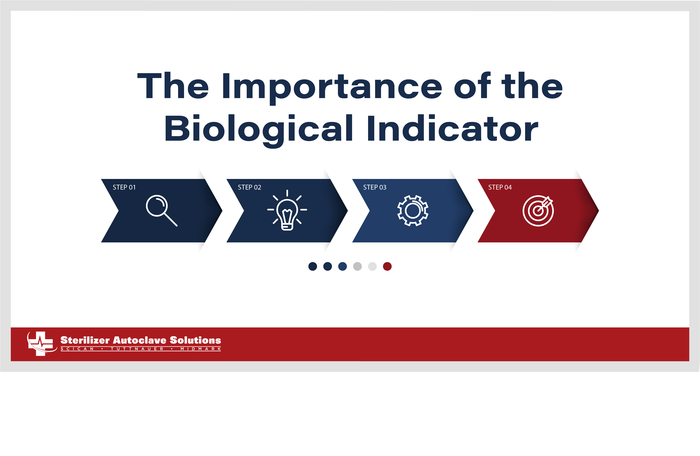The Importance of the Biological Indicator
Medical technology can be an investment for any business, and autoclaves are certainly no exception. To ensure you are getting the most of your investment, it is essential that your autoclave properly sterilize your tools of trade. This includes effectively eliminating all germs and pathogens during each cycle. The problem is that pathogens are so small, there’s no way to tell at a glance. Of course, the professionals thought about this and created a solution: the biological indicator. The device that can be placed into your autoclave to make sure it’s doing it job properly, and keeping your clients and staff safe. Below we are going to discuss the importance of the biological indicator. And if you have any questions, give us a call: 704-966-1650, option 3 and we will help identify the right indicator for your needs.
What is a Biological Indicator?
A biological indicator provides information on whether necessary conditions were met to kill a specified number of microorganisms for a given sterilization process, providing a level of confidence in the process. Endospores, or bacterial spores, are the microorganisms primarily used in BIs. A biological indicator is made up of a carrier material, on which bacterial spores with a defined resistance to the sterilization process have been applied. The carrier material is enclosed within a glassine vial. The BI is exposed to the sterilization process and then incubated under defined growth conditions to determine whether any spores survived the process. If no spores survive, none grow and the test is a pass. If growth is detected, the test is a fail.
Biological indicators are important for a couple reasons: first, they help ensure patient safety. Secondly, these indicators can help detect problems with the autoclave if the cycles aren’t up to standard. The biological indicator monitors the temperature and pressure inside of a sterilizer to ensure that it’s working properly. And this in turn can lead to finding problems with possible failing parts in your machine. Keeping your autoclave in good condition can sometimes be something people fall behind on. So these indicators giving you these kinds of results are a very big help. There are also a couple different kinds of these indicators that vary depending on use.
The Different Types of Indicators
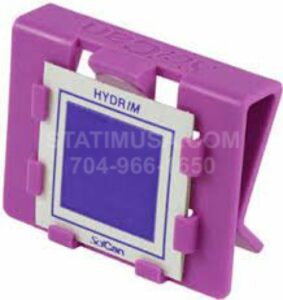
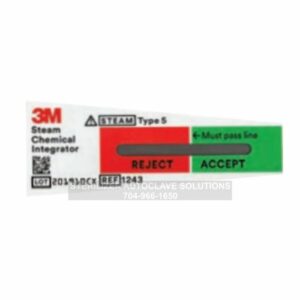
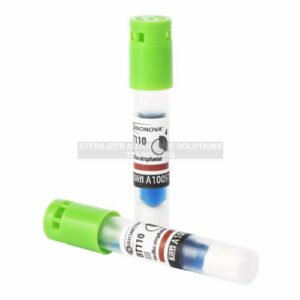
There are different kinds of biological indicators that you can use based on your needs. Some of these can fall under a very similar umbrella categorically, but the differences lie in where they can be used or how they get results. Products such as testing strips, chemical indicators and wash test indicators exist to test the cleaning efficiency of more machines than just autoclaves. It’s why we stress the importance of the biological indicator so heavily.
While we won’t be going into detail on all of them, we’ll show you one we’ve previously written about as an example: Tuttnauer’s Rapid-Test Indicators. A generally-used indicator that can be used for more than just one thing, but is also a more updated, newer than testing strips.
Rapid-Test Indicators
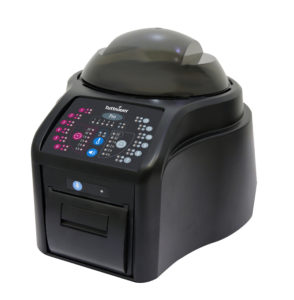 Rapid test indicators are just as the name suggests, rapid. There’s an example of both the vial and incubator above. They’re glass vials that you run through an autoclave cycle and they can be used in any type of steam sterilization. The vials themselves are filled with live bacteria to ensure that the sterilizer does its job properly. If proper sterilization is achieved, all of that bacteria should be dead. But these vials alone don’t give you results. They’re meant to be read by a biological incubator, like the one shown in the picture left.
Rapid test indicators are just as the name suggests, rapid. There’s an example of both the vial and incubator above. They’re glass vials that you run through an autoclave cycle and they can be used in any type of steam sterilization. The vials themselves are filled with live bacteria to ensure that the sterilizer does its job properly. If proper sterilization is achieved, all of that bacteria should be dead. But these vials alone don’t give you results. They’re meant to be read by a biological incubator, like the one shown in the picture left.
The rapid-test indicators are not a part of the autoclave itself. Rather they’re a tool to help measure the efficiency of the autoclave to meet sterilization standards. Standards which are inspected periodically to ensure a safe practice. So it’s important to know just how the biological indicator can help you. So we’ll tell you how the whole process works.
How To Use a Biological Indicator
The first step in this process is running the indicator through a sterilization cycle. The indicator vial is filled with live bacteria. If the autoclave is in top shape, all of the bacteria will be dead by the time the cycle completes. Once you’ve gotten the indicator back from the cycle, it’s time to move it to the incubator for reading. The incubator needs to be pre-heated, so while it’s warming up, let’s prepare the vial.
“Break” the vial by pressing down on the colored cap at the top. You’ll hear a click noise indicating that the seal is broken. Now you could continue to break the glass yourself, but luckily the indicator is built to help with that. There should be an oval shaped slot on top of the indicator. Place the vial in it, and move it back and forth about 6 or 7 times. Then shake the vial to make sure that everything is broken well enough to move on.
By now, the incubator will be primed to optimal temperature. That being the temperature you set it to. Then you just set the time on the incubator and place the vial in. Then the incubator itself can be set to read the indicator for 20 minutes or an hour depending on which indicator you have. The test will begin immediately, and will last until the end of the time set. And during this time, the positive and negative lights will keep flashing until the testing is finished. And just like that, you’ve completed a bio spore test.
We also have a video available if you need visual guidance.
Why should you use a biological indicator?
The biological indicator is a small device that monitors the temperature and pressure inside of a sterilizer. It does so by using biological indicators, which are living organisms that are sensitive to heat or UV light.
These biological indicators are used to determine if your autoclave has been properly sterilized. If you don’t use them, it may not be able to tell when the process is complete and you could end up with an ineffective sterilization cycle, and potentially contaminated equipment as well! So the importance of the biological indicator is not something to overlook.
Final Thoughts
A biological indicator is a critical part of your autoclave and helps keep it running smoothly. Periodic testing is also a very important factor in autoclave ownership. Without testing, you could risk damaging your equipment or missing an infection from contaminated instruments. Ultimately this could lead to so many other problems that can be a severe impact to your business and clientele. The importance of the biological indicator cannot be understated. If you have any questions, or need help finding the best indicator to fit your needs, you can contact us using the links below.
As always if you have any questions about this process or anything else please feel free to contact us and take advantage of our “FREE TECH SUPPORT.”
We also offer FREE VIRTUAL TECH SUPPORT to “See and Talk” with a “Real Time Live Technician” for any problems you may be in need of help with.
You can also use our “FREE MAINTENANCE PROGRAM”. Take the guesswork and worrying about what unit is due for maintenance and which maintenance cycle it is time for. We will keep track of all your autoclaves and let you know when it’s time for anything.
You can browse our collections of biological indicators here.
